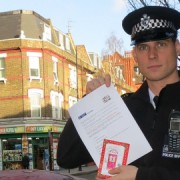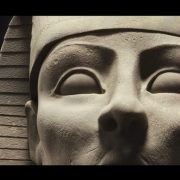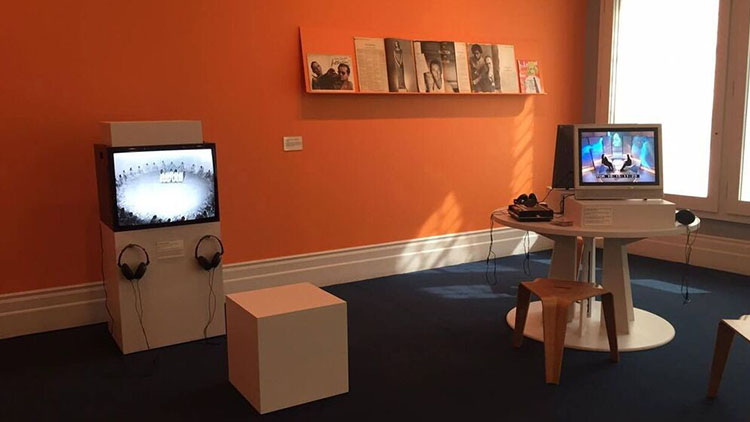
Q&A: Artists in Conversation exhibition at Whitechapel Gallery. Pic: Benedetta Ricci
A new exhibition, Q&A: Artists in Conversation, doesn’t feature paintings, photographs or sculptures – it is all about listening and watching artists.
Creating a new relationship between artists and audience since its opening earlier this month, the interactive display at the Whitechapel Gallery allows the public to dive into a new experience.
It features interviews by renowned artists such as Andy Warhol, Kevin Atherton and Jannis Kounellis, with contributions from Marysia Lewandowks, Bryan Robertson’s dialogue with US artists Robert Rauschenberg and audio recordings of talks given by Rosemarie Trockel and Carl Andre.
Visitors can find themselves in different places at different times, letting themselves go while listening to extravagant artists – and cats, in some cases.
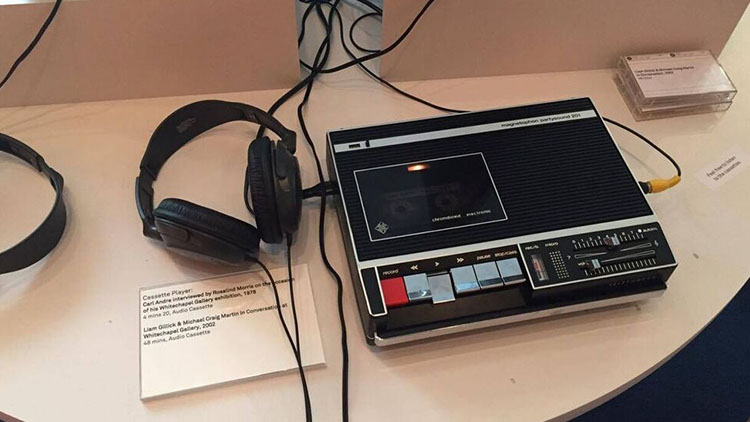
A recording of Carl Andre interviewed by Rosalind Morris for his Whitechapel Gallery exhibition, 1978. Pic, Benedetta Ricci
In fact, artist Marcel Broodthaers in Entretien avec un chat (Interview with a cat), a five-minute audio recorded in 1970, interviews a cat posing hard-hitting questions about the state of the art market. Visitors look almost surprised when the cat keeps giving the same answer, “Meow”.
Tracing the evolution of changing technologies and, consequently, the way interviews take place, Q&A: Artists in Conversation presents interviews from the Whitechapel Gallery Archive and other archives, and selected conversations conceived by artists and curators.
An interview is an exchange of ideas, a dialogic method to understand concepts and communicating them to a wider audience. The main idea behind the project is that artists’ interviews are as important as any other method to understand the concepts, feelings and inspiration that led to their art works.
Stylistically, there are all kinds of recordings. Starting from snappy press interviews to deep conversations about art, the exhibition aims to look at artists’ approaches to interviewing as an integral part of their work.
Some people walk in expecting to stand and observe art; instead, they are required to wear headphones to understand what surrounds them in Room 4.
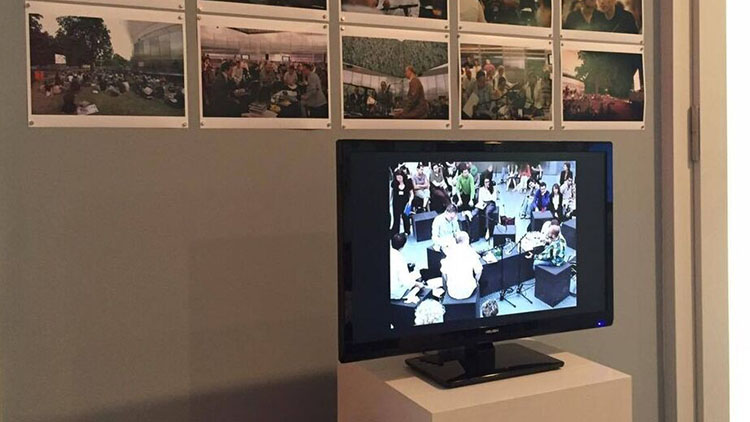
Serpentine Interview Marathon, 2008. Pic: Benedetta Ricci
Q&A: Artists in Conversation establishes a new relationship between artists and their audience; indeed, artists can now be looked at and listened to as common people who are expressing themselves through their job and/or passion.
The recorded film, email exchanges, radio interviews, audios and publications showcased are all art works in their own right. They allow the audience to feel part of the conversation, closer to the artists and more involved in the exhibition itself.
Art critics and historians interview artists to better understand their work, while artists use them to communicate ideas through conversations.
Kevin Atherton, In Two Minds, 1981, recorded himself live at the Midland Group Gallery, Nottingham, and seems to make points about himself, while commenting on art and society.
This work involves the artist talking to a video recording of himself three years before. The video within the video was recorded on the event of Atherton’s exhibition of the installation versions of In Two Minds at the Serpentine Gallery in London.
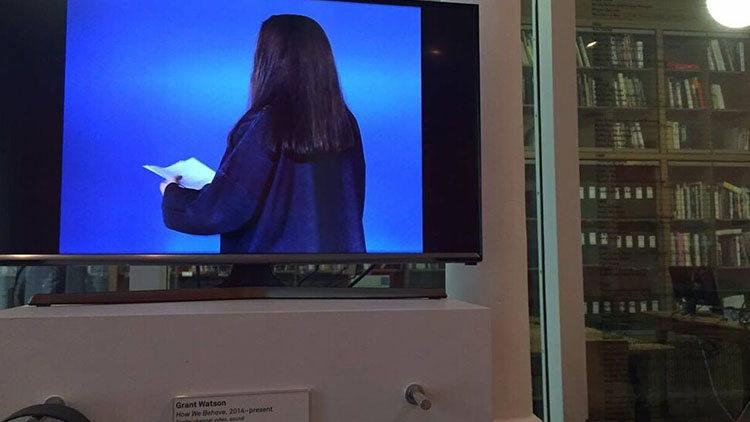
Grant Watson, How to behave, 2014-present. Pic, Benedetta Ricci
Over the course of 25 minutes, the artist asks himself many questions and gives the audience a new clearer idea of who he is as an artist and as a person.
He says: “All art doesn’t exist without an audience. If there is no audience to a piece of work, then there is no question.”
When asking himself how artists can separate life and art, Atherton says: “I want my art to be my life.”
The audience is amused by the artist, who admits to have had a few drinks before recording the video and gets annoyed at the younger version of himself, because he is drinking while talking to the public.
He says: “I used to think I knew you, but I don’t want to know you anymore.”
Funny and real, Atherton manages to make visitors smile while approaching difficult topics and lets them see a part of him they did not have a chance to know before.
On Thursday April 27, Nayia Yiakoumaki, curator of the exhibition, will lead a tour of the show at Zilkha Auditorium. Free entry but book online at: https://www.myonlinebooking.co.uk/whitechapel/sessions.aspx?tid=350
Q&A: Artists in Conversation reveals the richness of the interview format and shows how fundamental it is to hear artists’ voices in an art historical discourse.
The exhibition will be on until August 27, Tuesday to Sunday 11am-6pm.
The Whitechapel Gallery archive exhibitions are supported by Catherine and Franck Petitgas.



